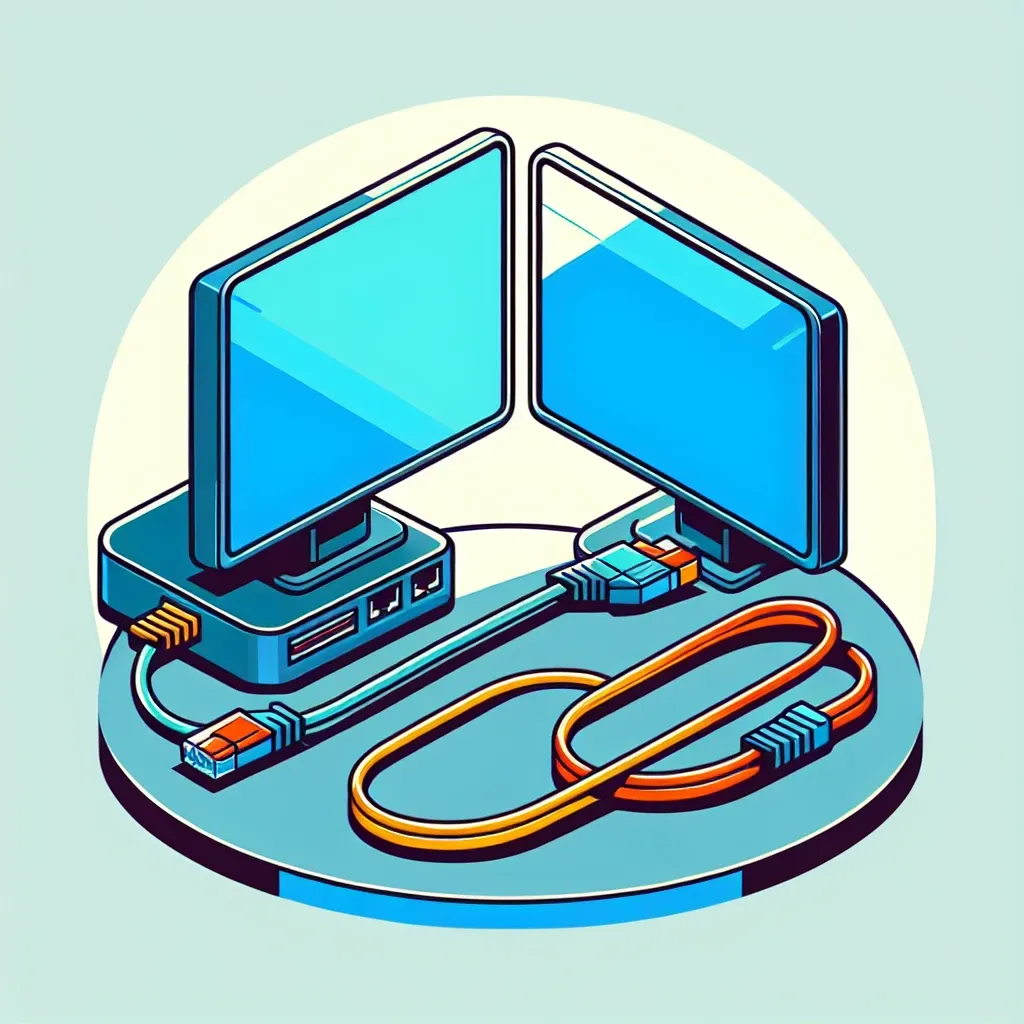Connecting two computers together with an Ethernet cable is a straightforward process that allows you to share files, resources, and network connections without the need for a network router or switch. This guide will walk you through the necessary steps, from obtaining the required hardware to configuring the settings on both devices.
Required Hardware
Before you can connect two computers using an Ethernet cable, you’ll need to ensure you have the following hardware:
- Two computers with Ethernet ports
- One Ethernet crossover cable or a standard Ethernet cable with auto-sensing ports
Hardware Specifications
| Hardware | Description |
|---|---|
| Ethernet Ports | Both computers must have functional Ethernet ports. |
| Ethernet Cable | A crossover cable is preferred, but modern computers with auto-sensing Ethernet ports can use a standard Ethernet cable. |
Once you have the required hardware, follow the steps below to connect and configure the two computers.
Steps to Connect Two Computers with an Ethernet Cable
Step 1: Connecting the Cable
Plug one end of the Ethernet cable into the Ethernet port of Computer A. Then, plug the other end into the Ethernet port of Computer B.
Step 2: Configuring Network Settings on Computer A
Windows
- Open the Control Panel.
- Navigate to Network and Sharing Center.
- Click on “Change adapter settings.”
- Right-click on Ethernet adapter and select “Properties.”
- Double-click on “Internet Protocol Version 4 (TCP/IPv4).”
- Select “Use the following IP address” and enter the following:
- IP address: 192.168.1.1
- Subnet mask: 255.255.255.0
Mac
- Open System Preferences.
- Click on “Network.”
- Select your Ethernet connection from the list.
- Click on “Advanced.”
- Go to the “TCP/IP” tab.
- Set “Configure IPv4” to “Manually.”
- Enter the following details:
- IP address: 192.168.1.1
- Subnet mask: 255.255.255.0
Step 3: Configuring Network Settings on Computer B
Windows
- Open the Control Panel.
- Navigate to Network and Sharing Center.
- Click on “Change adapter settings.”
- Right-click on Ethernet adapter and select “Properties.”
- Double-click on “Internet Protocol Version 4 (TCP/IPv4).”
- Select “Use the following IP address” and enter the following:
- IP address: 192.168.1.2
- Subnet mask: 255.255.255.0
Mac
- Open System Preferences.
- Click on “Network.”
- Select your Ethernet connection from the list.
- Click on “Advanced.”
- Go to the “TCP/IP” tab.
- Set “Configure IPv4” to “Manually.”
- Enter the following details:
- IP address: 192.168.1.2
- Subnet mask: 255.255.255.0
Testing the Connection
After configuring the IP addresses and subnet masks on both computers, you should test the connection to ensure that the two computers can communicate with each other:
- On Computer A, open the Command Prompt (Windows) or Terminal (Mac).
- Type the command ping 192.168.1.2 and press Enter.
- If the setup is successful, you will receive reply messages from Computer B.
If you encounter any issues, double-check the Ethernet cable connection and IP address settings on both computers. Restarting both computers may also resolve connectivity issues.
Sharing Files and Resources
Once the connection is established, you can share files and resources between the two computers:
Windows
- Open File Explorer and right-click the folder you wish to share.
- Select “Properties.”
- Go to the “Sharing” tab and click “Advanced Sharing.”
- Check the box for “Share this folder” and click “Permissions” to set the permissions as needed.
Mac
- Open System Preferences.
- Click on “Sharing.”
- Check the box for “File Sharing.”
- Click on the “+” button under “Shared Folders” to add the folder you wish to share.
- Set the permissions as needed.
Troubleshooting Tips
If you experience issues connecting the two computers, consider the following troubleshooting tips:
- Ensure both computers are on the same subnet (i.e., subnet mask 255.255.255.0).
- Disable any firewalls temporarily to see if they are blocking the connection.
- Check for any hardware issues, such as a defective Ethernet cable or port.
By following these steps, you should be able to establish a direct Ethernet connection between two computers efficiently. This method is particularly useful for quick file transfers or sharing resources when no network infrastructure is available.

